18 start with C start with C
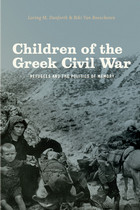
Marshalling archival records, oral histories, and ethnographic fieldwork, the authors analyze the evacuation process, the political conflict surrounding it, the children’s upbringing, and their fates as adults cut off from their parents and their homeland. They also give voice to seven refugee children who poignantly recount their childhood experiences and heroic efforts to construct new lives in diaspora communities throughout the world. A much-needed corrective to previous historical accounts, Children of the Greek Civil War is also a searching examination of the enduring effects of displacement on the lives of refugee children.
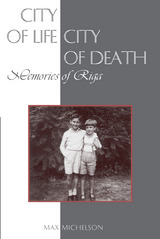
Michelson had a serene boyhood in an upper middle-class Jewish family in Riga, Latvia--at least until 1940, when the fifteen-year old Michelson witnessed the annexation of Latvia by the Soviet Union. Private properties were nationalized, and Stalin's terror spread to Soviet Latvia. Soon after, Michelson's family was torn apart by the 1941 Nazi invasion of the Soviet Union. He quickly lost his entire family, while witnessing the unspeakable brutalities of war and genocide.
Michelson's memoir is an ode to his lost family; it is the speech of their muted voices and a thank you for their love. Although badly scarred by his experiences, like many other survivors he was able to rebuild his life and gain a new sense of what it means to be alive.
His experiences will be of interest to scholars of both the Holocaust and Eastern European history, as well as the general reader.
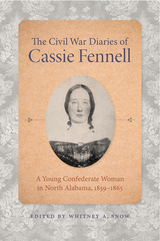
Born near Guntersville, Alabama, Catherine (Cassie) Fennell was nineteen when the Civil War began. Starting with her time at a female academy in Washington, DC, the diaries continue through the war’s end and discuss civilian experiences in Alabama and the Tennessee Valley. Fennell believed that by keeping a diary she made a small contribution to the war effort and history itself.
Fennell was fairly well off and highly educated, moving easily in very elite social circles. Most of her relatives were staunch Confederates, and the war took its toll, with multiple members of her family killed or captured. As Fennell recounts the consequences of war—the downward spiral of the family fortune, the withering of hope at news from the battlefront, and the general uncertainty of civilian life in the South—her diaries constitute one of the few contemporaneous records of north Alabama, including the shelling and burning of Guntersville, which has been poorly documented in the historiography of the Civil War. While the first diary is written as a private reflection, the war journals are well researched and rely on extensive familiarity with local newspapers and seem like they are intended for the eyes of later generations.
Ultimately, these diaries amount to a social history of the war years, in a specific region where scholars have recovered relatively few firsthand accounts, and editor Whitney Snow’s compilation adds to the now growing genre of women’s Civil War diaries. Insightful and engrossing, The Civil War Diaries of Cassie Fennell is a compelling portrait of a privileged young woman who suffered devastating losses for her ardent support of a Confederate nation.
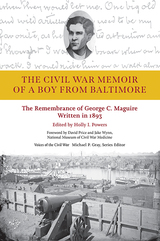
Fourteen-year-old George Maguire was eager to serve the Union when his home state, Maryland, began raising regiments for the coming conflict. Too young to join, he became a “mascot” for the Fifth Maryland Infantry Regiment, organized in September 1861. Although he never formally enlisted or carried a weapon, Maguire recounts several pivotal events in the war, including the sea battle of the Monitor vs. Merrimac, Peninsula Campaign action, and the Battle of Antietam.
During middle age, Maguire recorded his memoir—one of the few from a Maryland unit—providing a distinctive blend of the adventures of a teenage boy with the mature reflection of a man. His account of the Peninsula Campaign captures the success of the mobilization of forces and confirms the existing historical record, as well as illuminating the social structure of camp life. Maguire’s duties evolved over time, as he worked alongside army surgeons and assisted his brother-in-law (a “rabid abolitionist” and provost marshal of the regiment). This experience qualified him to work at the newly constructed Thomas Hicks United States General Hospital once he left the regiment in 1863; his memoir describes the staffing hierarchy and the operating procedures implemented by the Army Medical Corps at the end of the war, illuminated with the author’s own sketches of the facility.
From the Pratt Street riot in Baltimore to a chance encounter with Red Cross founder Clara Barton to a firsthand view of Hicks Hospital, this sweeping yet brief memoir provides a unique opportunity to examine the experiences of a child during the war and to explore the nuances of memory. Beyond simply retelling the events as they happened, Maguire’s memoir is woven with a sense of remorse and resolve, loss and fear, and the pure wonderment of a teenage boy accompanying one of the largest assembled armies of its day.
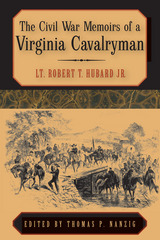
Robert Hubard was an enlisted man and officer of the 3rd Virginia Cavalry in the Army of Northern Virginia (CSA) from 1861 through 1865. He wrote his memoir during an extended convalescence spent at his father’s Virginia plantation after being wounded at the battle of Five Forks on April 1, 1865. Hubard served under such Confederate luminaries as Jeb Stuart, Fitz Lee, Wade Hampton, and Thomas L. Rosser. He and his unit fought at the battles of Antietam, on the Chambersburg Raid, in the Shenandoah Valley, at Fredericksburg, Kelly’s Ford, Chancellorsville, Gettysburg, Bristoe Station, and down into Virginia from the Wilderness to nearly the end of the war at Five Forks.
Hubard was like many of his class and station a son of privilege and may have felt that his service was an act of noblesse oblige. Unlike many of his contemporaries, however, he was a keen observer and a writer of unusual grace, clarity, humor, and intelligence. The editor has fleshed out his memoir by judicious use of Hubard’s own wartime letters, which not only fill in gaps but permit the reader to see developments in the writer’s thinking after the passage of time. Because he was a participant in events of high drama and endured the quotidian life of a soldier, Hubard’s memoir should be of value to both scholars and avocational readers.
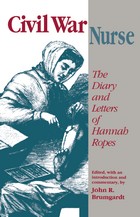
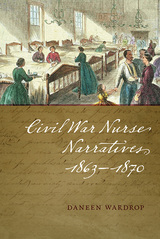
As a subgenre of war literature, the Civil War nurse narrative offered realistic reportage of medical experiences and declined to engage with military strategies or Congressional politics. Instead, nurse narrators chronicled the details of attending wounded soldiers in the hospital, where a kind of microcosm of US democracy-in-progress emerged. As the war reshaped the social and political ideologies of the republic, nurses labored in a workplace that reflected cultural changes in ideas about gender, race, and class. Through interactions with surgeons and other officials they tested women’s rights convictions, and through interactions with formerly enslaved workers they wrestled with the need to live up to their own often abolitionist convictions and support social equality.
By putting these accounts in conversation with each other, Civil War Nurse Narratives productively explores a developing genre of war literature that has rarely been given its due and that offers refreshing insights into women’s contributions to the war effort. Taken together, these stories offer an impressive and important addition to the literary history of the Civil War.
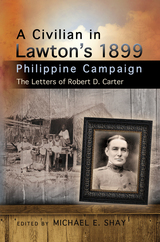
In the midst of the Philippine-American War, twenty-two-year-old Robert Dexter Carter served in Manila as a civilian quartermaster clerk. Through his letters to his family, he provided a vivid picture of army life in Manila—the sights, the smells, and his responses to the native culture. In addition to his letters, his diary and several related articles present a firsthand account of the historic voyage of the United States Army Transport Grant through the Suez Canal to Manila in early 1899. Carter’s writings not only tell of his sometimes harrowing experiences, but also reveal the aspirations and fears of a young man not quite sure of his next steps on life’s journey.
Carter’s father, Robert Goldthwaite Carter, was a war hero and a longtime friend of Maj. Gen. Henry W. Lawton. Carter obtained his position through Lawton’s influence, and his respect for Lawton is clear throughout his writings. A frequent guest in the Lawton home, the young clerk was introduced to many notable figures both military and civilian. Carter’s letters, particularly to his father, are full of news and gossip related to his commander. In other letters, he reveals the kindness and generosity of Mrs. Lawton, who took time to look out for Carter while he was in the hospital and often loaned him books.
This well-researched and expertly edited work casts light on the role of support troops in war, a subject too often minimized or ignored. Shay begins each chapter with an introduction that establishes the setting, the context of events, and the disposition of Carter and his compatriots and provides notes and commentary to place the letters in context. By choosing not to edit the offensive expletives of a sometimes arrogant and racist young man, Shay presents a fully nuanced portrait of a young American exploring the larger world in a time of turmoil.
Enhanced by photographs from collections at the Library of Congress and the Military History Institute, as well as many of Carter’s own whimsical drawings, the book will appeal to armchair historians and scholars alike.
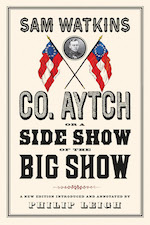
Co. Aytch, or a Side Show of the Big Show is perhaps the finest memoir of an ordinary Confederate soldier. According to Margaret Mitchell, “a better book there never was.” Sam Watkins served in Company H of the First Tennessee Infantry for the duration of the Civil War. Remarkably, he survived some of the most intense battles of the war, including Shiloh, Chickamauga, Kennesaw Mountain, Atlanta, and Franklin. He was one of only seven of the original members of Company H when it surrendered in April 1865. Watkins’s memoir was written in the winter of 1882–83. The humor and depth of writing at times rises to a level resembling Mark Twain; thus, twenty-first-century readers can still discover the everlasting treasures of Private Sam Watkins’s story just as it was. It is this reason that excerpts were featured frequently in Ken Burns’s documentary on the Civil War. However, since most of Sam’s original readers—or some of their family members—actually lived through the Civil War, much of the context for the narrative was common knowledge. But what was once received history has gradually disappeared, and presently only specialists can fully understand and appreciate Sam’s tale.
The chief aim for this new annotated edition of Co. Aytch—the first of its kind—is to amplify the experience for today’s readers by providing the missing context. Over 240 annotations clarify the situational backgrounds, personalities, and terminology that might not be familiar to most readers. The annotations also identify and explain errors mostly resulting from Sam’s occasionally faulty memory or limited perspective. Similarly, twentyfour battlefield and war theater maps enable readers to track Sam’s combat participation as well as his journeys while marching with the army. Finally fifteen photographs and prints illustrate some of the battles, people, towns, buildings, tools of war, and ruins that Sam witnessed. As someone once cleverly observed, “It’s not an adventure until something goes wrong.” If nothing else, Sam’s memoir is a foot soldier’s view of the resulting horrors, heroics, and healing humor when war planning routinely goes awry.
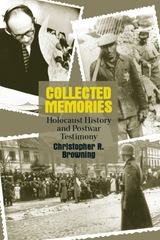
Despite these controversies and challenges, Browning delineates the ways in which the critical use of such problematic sources can provide telling evidence for writing Holocaust history. He examines and discusses two starkly different sets of "collected memories"—the voluminous testimonies of notorious Holocaust perpetrator Adolf Eichmann and the testimonies of 175 survivors of an obscure complex of factory slave labor camps in the Polish town of Starachowice.
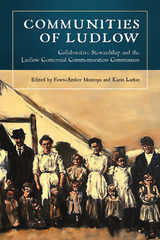
The history of the Ludlow Massacre encompasses the stories of immigrant groups, women, the working-class, and people of color as much as the story of that tragedy, and the continued relevance of these issues creates a need for remembrance and discussion of how to make the events of the Ludlow Massacre available to contemporary society. The book outlines recent efforts to remember and commemorate this important historical event, documenting the unique collaborations in public scholarship and outreach among the diverse group of people involved in marking the 100-year anniversary of the Ludlow Massacre. The chapters relate the tales of the stewards of the Ludlow Massacre—the various communities that rallied together to keep this history alive and show its relevance, including lineal descendants, members of the United Mine Workers of America, historians, archaeologists, scholars, artists, interpreters, authors, playwrights, and politicians. The book also offers tips, strategies, and cautionary tales for practicing engaged public scholarship.
The history of the Ludlow Massacre has been told as a tragedy of striking miners in the West that occurred during a turbulent time in US labor relations, but it is so much more than that. Communities of Ludlow explores the intersections of public scholarship, advocacy, and personal experience, weaving these perspectives together with models for practicing public scholarship to illustrate the power of creating spaces for sharing ideas and information in an environment that encourages creativity, open dialogue, public outreach, political action, and alternative narratives.
Contributors: Robert Butero, Robin Henry, Michael Jacobson, Elizabeth Jameson, Linda Linville, Matthew Maher, Yolanda Romero

So wrote Thomas Wentworth Higginson about his role in one of the most compelling and fascinating episodes in the history of the United States. As the colonel of the first regiment of black men in the Union army during the Civil War, Higginson was an early, articulate, and powerful crusader for civil rights, and his journal and letters, collected for the first time in this volume, present some of the most extraordinary documents of the Civil War.
Higginson was a politically engaged intellectual at the forefront of radical antislavery, labor, and feminist causes. Born in 1823 to a formerly wealthy but still prominent Brahmin family, he became one of America's leading social activists and a prominent writer, minister, and reformer. With the publication in 1869 of his classic Army Life in a Black Regiment, which drew on this journal, Higginson became one of the most important chroniclers of the Civil War. The Complete Civil War Journal and Selected Letters of Thomas Wentworth Higginson is the first comprehensive edition of his journal. Sensitively and thoroughly annotated by Christopher Looby and supplemented by a large selection of Higginson's wartime letters, this volume offers the most vivid and intimate picture of the radical interracial solidarity brought about by the transformative experience of the army camp and of Civil War life.
"The immediacy of Higginson's reflections, as well as their sharp insights, make this journal both distinctive and enduringly compelling . . . . Higginson's vivid texts can once again educate, gratify and delight readers."—Publishers Weekly
"This volume will enrich our understanding of the transformations that emancipation and war wrought."—Library Journal
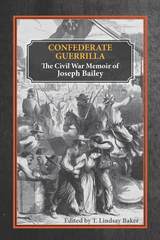
Joseph M. Bailey’s memoir, Confederate Guerrilla, provides a unique perspective on the fighting that took place behind Union lines in Federal-occupied northwest Arkansas during and after the Civil War. This story—now published for the first time—will appeal to modern readers interested in the grassroots history of the Trans-Mississippi war. Bailey participated in the Battle of Pea Ridge and the siege of Port Hudson, eventually escaping to northwest Arkansas where he fought as a guerrilla against Federal troops and civilian unionists. After Federal forces gained control of the area, Bailey rejoined the Confederate army and continued in regular service in northeast Texas until the end of the war.
Historians will find the descriptions of military campaigns and the observations on guerrilla war especially valuable. According to Bailey, Southern guerrillas were motivated less by a sense of loyalty to either the Confederate or Union side than by a determination to protect their families and neighbors from the “Mountain Federals.” This partisan war waged between the rebel guerrillas and Southern Unionists was essentially a “struggle for supremacy and revenge.”
Comprehensive annotations are provided by editor T. Lindsay Baker to illuminate the clarity and reliability of Bailey’s late-life memoir.
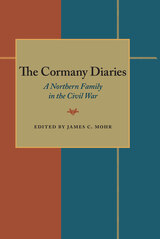
Rachel Cormany (nee Bowman) met Samuel Cormany at Otterbein University in Ohio. After her husband enlisted in a cavalry unit, she writes poignantly of her anxieties, poverty, and loneliness. Samuel, on the other hand, is ambitious in his military career, and tells enthusiastically about his engagements that include camp life, cavalry raids, army politics, and his battles with alcohol. Editor James C. Mohr has arranged the diaries so that the voices of husband and wife alternate, and his notes enlighten many of the issues relating to the diarists and their daily lives.
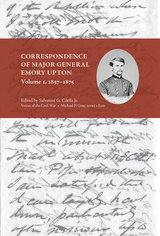
Emory Upton (1839–1881) was thrust into the Civil War immediately upon graduation from the United States Military Academy at West Point in May of 1861. He was wounded three times during the war. He participated in nearly every major battle in the Eastern Theater including Fredericksburg, Gettysburg, and Spotsylvania, where he led a prominent attack on entrenched Confederate positions—a signal of Upton’s brilliance as an officer and of his military creativity that foreshadowed his later work in revising the Army’s tactics. Upton was mustered out of service in 1866 and later named commandant of cadets at West Point, a position that carved a path for Upton to focus more on Army tactics and reforms.
Until now, the only lenses through which scholars could study Upton were two biographies published nearly a century apart but practically identical in scope and treatment. The two-volume Correspondence of Major General Emory Upton follows Upton through his enrollment at West Point to his extensive Army activities following the Civil War and contains the bulk of his wartime correspondence. Volume one, with Upton’s Civil War correspondence encompasses both larger battle details and day-to-day activities in the life of a soldier. His letters reveal a mercurial individual: a humorous person used to suffering and rejoicing, who could be flawed and brilliant, vain and humble.
These selected letters and reports, expertly annotated and gathered from repositories across the country, present a more complex, human Emory Upton. He is both the “clean, pure, and spotless” individual of biographies and the ambitious, yet flawed Army officer obsessed with his career. These volumes explore his trials and frustrations as well as his triumphs.
Salvatore G. Cilella Jr., now retired, was president of the Atlanta Historical Society. He is the author of Upton’s Regulars: The 121st New York Infantry in the American Civil War and Fund Raising for Small Museums in Good Times and Bad.
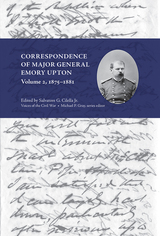
Emory Upton (1839–1881) was thrust into the Civil War immediately upon graduation from the United States Military Academy at West Point in May of 1861. He was wounded three times during the war. He participated in nearly ever major battle in the Eastern Theater including Fredericksburg, Gettysburg, and Spotsylvania, where he led a prominent attack on entrenched Confederate positions—a signal of Upton’s brilliance as an officer and of his military creativity that foreshadowed his later work in revising the Army’s tactics. Upton was mustered out of service in 1866 and later named commandant of cadets at West Point, a position that carved a path for Upton to focus more on Army tactics and reforms.
Until now, the only lenses through which scholars could study Upton were two biographies published nearly a century apart but practically identical in scope and treatment of Upton. The two-volume Correspondence of Major General Emory Upton follows Upton through his enrollment at West Point to his extensive Army activities following the Civil War and contains the bulk of Emory Upton’s wartime correspondence. Volume two collects Upton’s foreign correspondence and observations on military tactics and Army reform. At the behest of U.S. Army Commanding General William T. Sherman, Upton was sent on a tour to study the armies of Asia and Europe, and more specifically the German army after conclusion of the Franco-Prussian War. This tour resulted in the publication of his monumental The Armies of Europe and Asia, which warned that the U.S. Army was woefully below the standards of European nations, and between Upton’s death in 1881 and the turn of the twentieth century, military policy was fiercely debated in both the military and popular press. Upton’s ideas on reform were often central to the arguments, and his letters and writings provoked a wide range of discussion over military and, inevitably, civilian issues.
These selected letters and reports, expertly annotated and gathered from repositories across the country, present a more complex, human Emory Upton. He is both the “clean, pure, and spotless” individual of Michie’s biographies and the ambitious, yet flawed Army officer obsessed with his career. These volumes explore his trials and frustrations as well as his triumphs.
Salvatore G. Cilella, now retired, was president of the Atlanta Historical Society. He is the author of Upton’s Regulars: The 121st New York Infantry in the American Civil War and Fund Raising for Small Museums in Good Times and Bad.

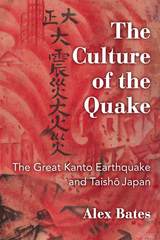
READERS
Browse our collection.
PUBLISHERS
See BiblioVault's publisher services.
STUDENT SERVICES
Files for college accessibility offices.
UChicago Accessibility Resources
home | accessibility | search | about | contact us
BiblioVault ® 2001 - 2024
The University of Chicago Press









